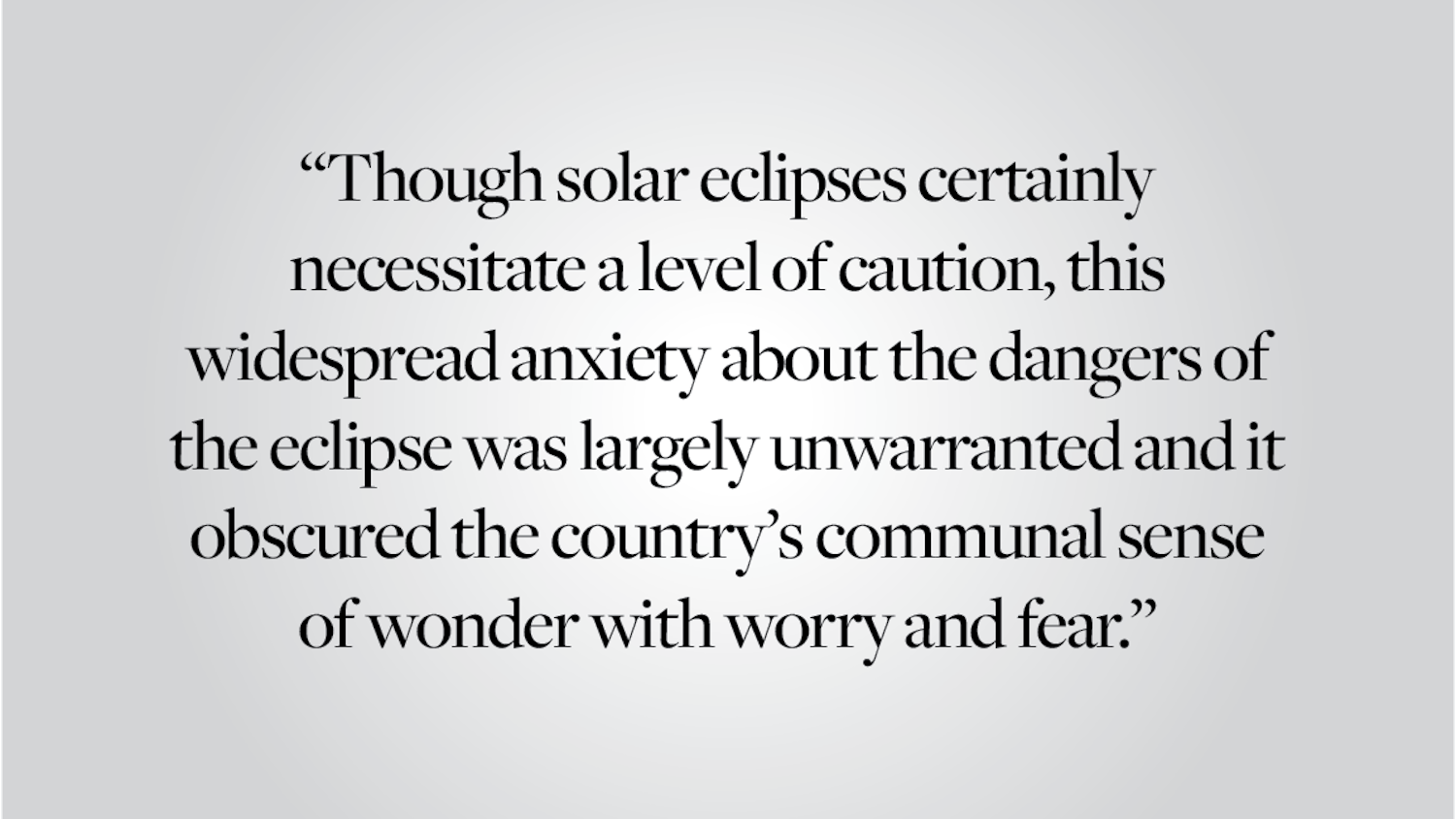On a recent weekday morning, I was walking on the Main Green when my eyes chanced upon a sight more frightful than anything Halloweekend could offer — not a ghoul or murderous clown, but a strikingly disorienting piece of public art. I do not wish to disturb the bliss of those unaware of this recent development, but I am obligated to report the facts: On the Main Green, there now stands a tree, discernibly artificial, with a gray boulder placed in between its bare branches.
It wasn’t there before. And I am upset.
Well, let me take a step back: I have no problem with the aesthetics of “Untitled (Lamp/Bear)” or “Tree/Rock” — the name I’ve given to Brown’s newest arboreal addition. There’s something about “Tree/Rock,” in fact, that’s reassuringly verisimilar. At one point or another, I’m sure we’ve all felt like climbing to the top of a tree, transforming into a lifeless artifact of geology and remaining there for all of eternity. But for all its relatability, “Tree/Rock” represents a disheartening policy of Brown’s public art selection — one that simultaneously shapes Brown’s public spaces with little incorporation of the public will and that exhibits a capricious disregard for the sanctity of art and public space.
In a community like Brown that prides itself on traditions of inclusion and deliberation, the aesthetic of public spaces is not merely an ornamental consideration. Art, after all, is an instrument of democracy — the highest form of human self-expression, reflection and engagement with the surrounding world. The effects of art and democracy are neutered, if not completely undone, when decisions pertaining to the construction of our shared spaces are not made democratically.
Consider the fact that, as of now, a Committee on Public Art — whose membership “is drawn from Brown University faculty, the Corporation and the Providence community,” with students only eligible to play an advisory role — determines the pieces of art that are displayed on campus. Importantly, this committee does not include students, who are critical stakeholders in and the main consumers of Brown’s public spaces. Such a set-up is hopelessly undemocratic, for students are the ones who have to walk past and observe the committee’s artistic playthings on a daily basis. Indeed, when one bureaucratic organization convened in some corner office makes the decision to place a piece of art somewhere, it exercises a significant power: to shape the visual, and thus the visceral, experience of Brown’s public spaces. Questions of consent naturally follow: If art truly is a powerful medium of communication and meditation, as I’m sure the committee believes, is it fair to subject students to an aesthetic experience to which they did not agree? I don’t think so.
Brown, like all institutions of higher learning, functions as a training ground for democracy — a culture of unfettered empowerment and openness. Thus, the practice of democracy is not merely ideological; it is also performative and reliant on a clear stage. Public spaces serve as this stage. They are a forum for protest and discourse, for serendipitous encounters between diverse people, for the utterance of new voices and new perspectives. In this way, public spaces are sacred. They should be organized for the benefit of their primary dependents, not in the interest of avant-garde experimenters with a lesser stake in our community than students.
Of course, public artwork is also an important means by which Brown’s administrators raise funds and maintain healthy relations with donors, as Daniel Meyer ’17 recently opined on (“Meyer ’17: Lamp/Bear sucks,” Sept. 16). For example, Steve Cohen P’16, a hedge fund manager, has donated significant sums of money to bolster Brown’s financial aid program, so housing a piece of his art collection doesn’t feel unreasonable. But Cohen’s art collection is extraordinarily extensive; he is perfectly capable of offering multiple options to the community — or none at all. And just as importantly the University is perfectly capable of letting students have some input in the public art selection process.
As a sophomore who’s got plenty of time left on campus, I really do want the Committee of Public Art to actually achieve its mission of “enriching (Brown’s) cultural, intellectual and scholarly life.” But that can’t meaningfully happen when the process of selecting the public art is undemocratic and insulated from the will of the student body.
Anuj Krishnamurthy ’19 can be reached perched on top of “Tree/Rock” at anuj_krishnamurthy@brown.edu.




